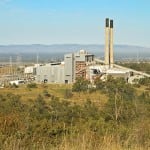The political impasse stalling investments in renewables in Australia was breached in mid-May after lawmakers reached an agreement to revise the renewable energy target (RET).
After months of intense wrangling, the Coalition and Labor parties struck a deal to cut the RET to 33,000 GWh from the current 41,000 GWh. That figure is far more than the 26,000 GWh initially demanded by the government when negotiations began. It exempts large-scale, emissions-intensive, trade-exposed industries like aluminum smelting and steel production from the RET, and it scraps the biennial reviews pushed for by the Coalition. It will instead require the Clean Energy Regulator to provide an annual statement to parliament on progress towards the target and its impact on power prices.
Australia’s RET, which has been in operation since 2001, was increased in 2010 to require that about 20% of the nation’s then-projected demand in 2020 would be met by renewables. The current RET essentially comprises a large-scale renewable energy target (LRET) of 41,000 GWh, with contributions from a small-scale renewable energy scheme and pre-existing renewables, mostly hydro. However, projections for power demand in the National Electricity Market in 2020 have plunged by about 16% since 2010, which means the LRET now makes up about 27% of projected 2020 generation. Large-scale renewables with an annual output of about 17,000 GWh have already been developed since the scheme was introduced.
The deal, which passed the lower house on June 2 and must still pass the Senate, was welcomed by the country’s generators. “The credibility of the scheme has been enhanced by agreeing to a revised target that reflected rapidly changing electricity market conditions,” said Energy Supply Association of Australia Chief Executive Matthew Warren.
It was also hailed by the renewable energy sector. Clean Energy Council Chief Executive Kane Thornton said investments of more than A$40 billion can be unlocked by the deal. Between 30 to 50 major projects could be built to meet the new target, along with hundreds of medium-scale solar projects—all worth about 6 GW of nameplate capacity. The country currently has about 40 renewable projects totaling 6.6 GW.
The coal-rich nation’s energy overhaul began with the election of the current conservative government headed by Prime Minister Tony Abbott in 2013. Since then, the country has abolished a cap-and-trade program, adopting instead the “Direct Action Plan” and the Emissions Reduction Fund (ERF), a A$2.55 billion pool of capital to incentivize “direct action” by industry to reduce greenhouse gas emissions.
The first ERF auction held in April indicates the mechanism could result in four times the carbon reductions compared to the carbon tax, the government claims. For an in-depth look at the political dispute surrounding renewables in Australia, see “Australia’s Renewables Impasse Weighs Heavily on Generators” in POWER’s February 2015 issue.
—Sonal Patel, associate editor









